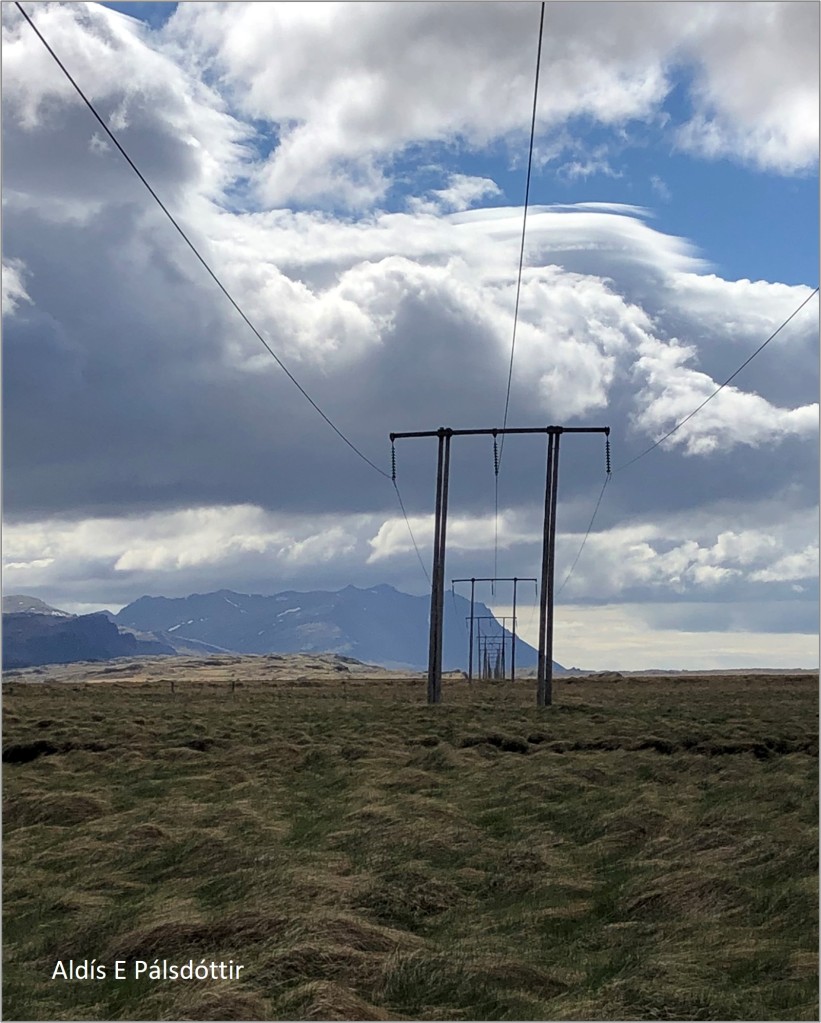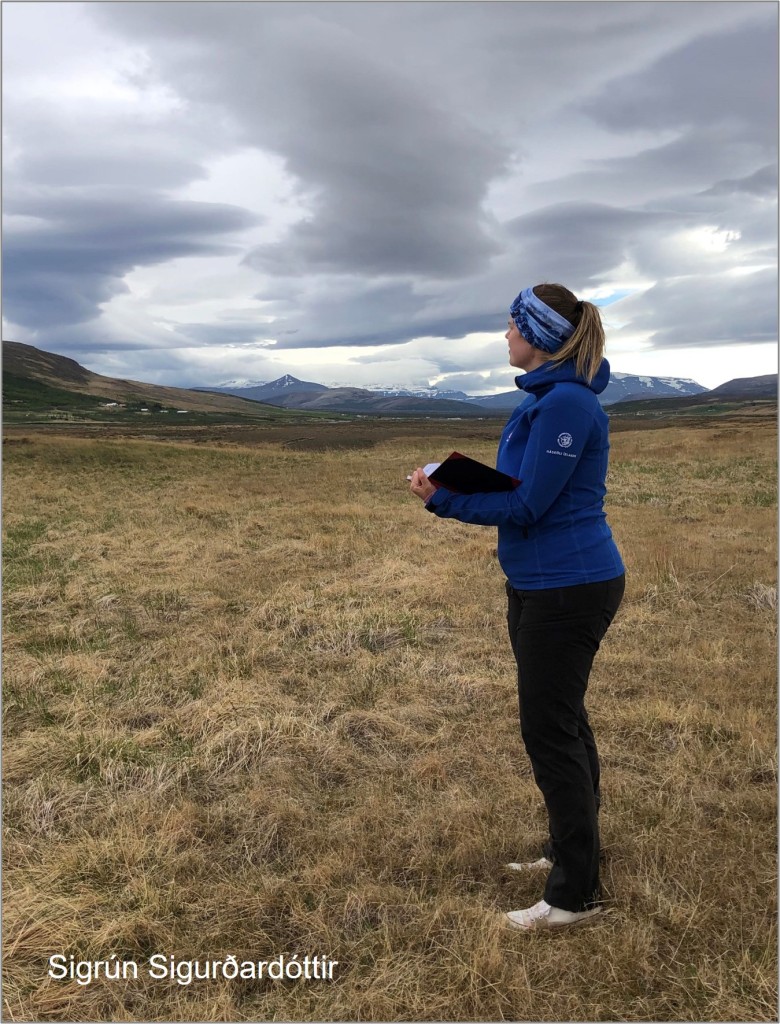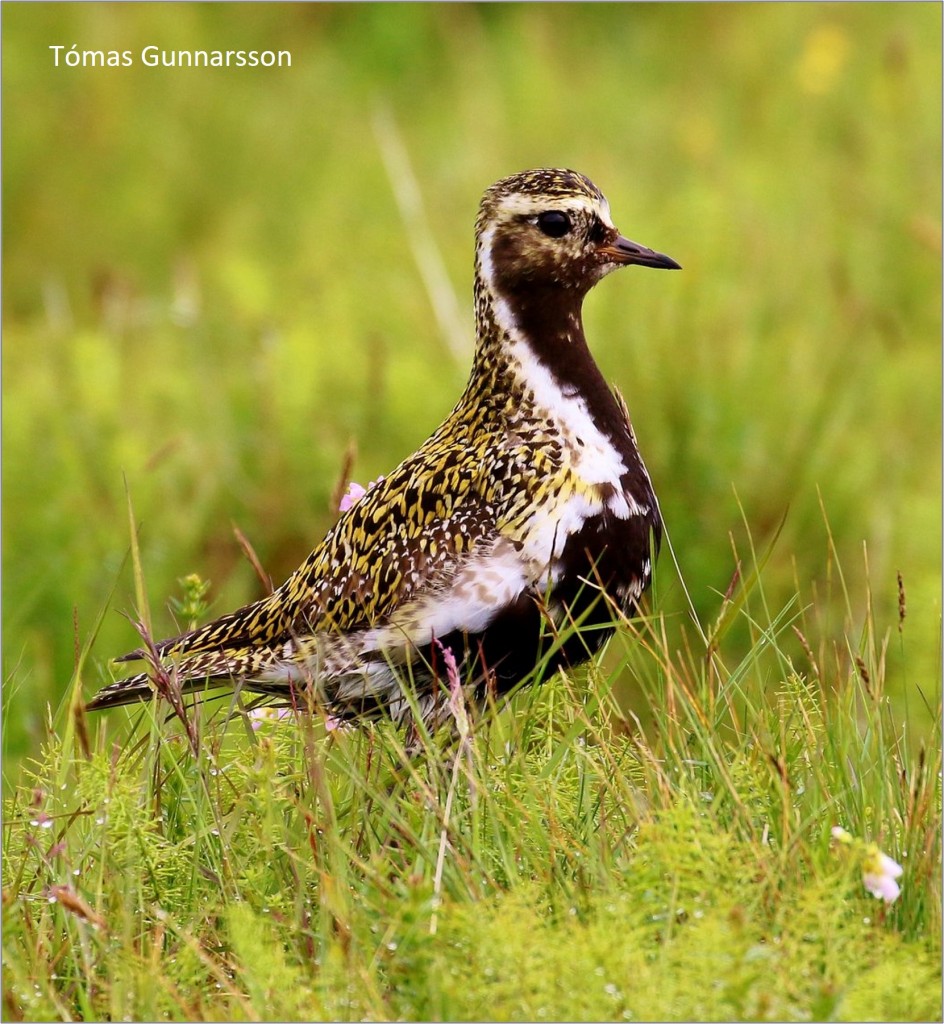Around the globe, people are consuming more energy, much of which is delivered to cities, towns, individual homes and businesses via over-head electricity cables. In a paper in Ibis, Aldís E Pálsdóttir and colleagues investigate the effects of power-lines on Iceland’s breeding waders. This is the first of several papers from Aldis’ PhD thesis, in which she seeks to understand how forestry and the sprawl of new infrastructures (roads, cottages and power-lines) are changing bird distributions within what were previously open landscapes.
Breeding waders in Iceland
Iceland is a hot-spot for breeding waders, holding half or more of Europe’s Dunlin, Golden Plover and Whimbrel, in a country that is a bit smaller then England. In a 2017 report prepared by AEWA (Agreement on the Conservation of African-Eurasian Migratory Waterbirds), in response to concerns about the effects of afforestation on Iceland’s waterbirds, we learn that:
“Iceland is second only to Russia in its importance as a breeding ground for migratory waterbirds in the AEWA region. It supports the most important breeding populations in Europe for six species of waders and is the second most important country for three.”
Data in the table alongside have been extracted from Annex 4 of the report, which was discussed at the 12th Standing Committee of AEWA in Jan/Feb 2017.
Power lines
For waders nesting in Iceland, power-lines are a new addition to a once-open landscape. Pylons provide potential nesting opportunities for Ravens and perches for Gyrfalcons, while the wires between them are a collision risk. Under power-lines, carcases of swans, geese and waders may attract scavenging Arctic Foxes and Ravens, thereby increasing the activities of nest predators. Perhaps these actual and perceived threats affect densities of breeding waders in the vicinity? Or might birds react to something less obvious, such as the emission of UV light or electromagnetic radiation?
In Iceland, the vast majority of electricity is produced from hydropower or geothermal sources, often long distances from the areas in which the power is used. A new move to develop the wind energy sector has the potential to further add to the number of power lines and introduce them in more areas of the country. Much of the increase in electricity production over the last fifty years has been used to fuel industries such as aluminium smelting and there is the potential to further expand generation capacity, perhaps exporting some electricity to other countries.

Counting the birds
Aldís conducted the fieldwork for this study between the 6th May and the 20th June 2019, counting birds along 85 transects of between 300 m and 500 m, running perpendicular to power lines. The full methods are described in the paper but it is interesting to see that they included a check to see whether there were different results if walking towards or away from the power lines. Each transect was divided into intervals of 50 m length, each corresponding to 1 hectare of surveyed land. For each power line, Aldís recorded the number of cables, pylon characteristics, and the height and voltage of the line.
Results
In total, 1067 birds of 21 different species were recorded on the 85 transect surveys. Over 90% of sightings were of eight species considered in the subsequent analysis: Dunlin, Black-tailed Godwit, Golden Plover, Meadow Pipit, Redshank, Redwing, Snipe and Whimbrel. Having analysed the data, Aldís and her colleagues concluded that:
- For all eight species combined, the areas closest to the power lines (0-50 m) supported densities of approximately 112 birds/km2 (±13 SE) which increased by approximately 58% to 177 birds/km2 (±24 SE), in the sector that was between 450-500 m away from the power-lines. On average, there was a 4% increase in abundance between adjacent 50 metre bands.
- At the species level, Redshank (figure below) and Whimbrel density increased significantly with distance from power lines (18% and 9% per 50 m, respectively) but no other significant effects were detected for other species individually.
- There were no detectable difference between types of power-lines or relating to the voltages of the electricity they carried.

Implications of the research
In the paper’s discussion there are questions as to why densities of Redshank and Whimbrel (right), in particular, are lower near power-lines. The two species behave differently while nesting, with Redshanks being nest-hiders and Whimbrel nesting in the open, but previous research has shown that their nest predation rates are quite similar (see Where to nest?).
The reason why significant reductions in density close to power lines were apparent for Whimbrels and Redshanks (but not for other species) is not clear but the authors suggest that sample sizes may have been too low for there to have been measurable effects for species such as Dunlin and Golden Plover (below).
Power lines could have direct impacts, such as increased collision risk, but this may be difficult to establish directly, as the authors suggest that carcasses are likely to be quickly removed by scavengers.
Ravens may find it easier to find and predate nests if there are pylons or wires on which to perch but it will be hard to discriminate between an actual predation effect, reducing numbers in areas close to power-lines, and the avoidance of risky areas because of a perceived threat of predation. This is discussed in Mastering Lapwing conservation.
Given the depressed density of ground-nesting bird species in the vicinity of overhead power lines, the authors of the paper suggest that burying power lines might be a better option, even though there would be temporary disturbance to the ground during installation.
What are the implications for Iceland’s breeding waders?
It would be interesting to calculate how many Whimbrel and Redshank (left) territories would be lost over the course of a 50 km run of power-lines through open landscapes – and then extrapolate that to 500 km and 5,000 km. As shown in the earlier table, 75% of Europe’s Whimbrel breed in Iceland. How vulnerable are they to power-line infrastructures and what might be the impact on a breeding population of over 300,000 pairs?
This is the first of several papers from Aldis’ thesis, in which she seeks to understand the current rapid changes to Iceland’s lowland landscapes. Links to other blogs and papers will be added as they appear. It should soon be possible to reveal the combined effects of these incursions into open wader habitats, by considering plans that might affect these areas over the next twenty years, working out potential losses and setting these numbers in a flyway context.
This paper is published as:
Effects of overhead power-lines on the density of ground-nesting birds in open sub-arctic habitats. ALDÍS ERNA PÁLSDÓTTIR, JENNIFER A. GILL, SNÆBJÖRN PÁLSSON, JOSÉ A. ALVES, VERÓNICA MÉNDEZ, BÖÐVAR ÞÓRISSON & TÓMAS G. GUNNARSSON. Ibis. https://doi.org/10.1111/ibi.13089
Here’s a link to another blog about Aldís Pálsdóttir’s research: Iceland’s waders need a strategic forestry plan.
A complementary set of papers by Lilja Jóhannesdóttir investigated how changes to Iceland’s farming may also be affecting breeding waders. These are discussed in three WaderTales blogs:
- Do Iceland’s farmers care about wader conservation? At a time of agricultural expansion, are farmers prepared to leave space for breeding waders?
- Farming for waders in Iceland investigates densities of breeding waders along the gradient of agricultural intensification associated with farming activities.
- Designing wader landscapes investigates whether breeding densities of waders can be maintained, as farming expands and intensification increases.

WaderTales blogs are written by Graham Appleton (@GrahamFAppleton) to celebrate waders and wader research. Many of the articles are based on published papers, with the aim of making shorebird science available to a broader audience.







Reblogged this on Wolf's Birding and Bonsai Blog.
LikeLike
Pingback: Iceland’s waders need a strategic forestry plan | wadertales
Pingback: January to June 2022 | wadertales
Pingback: A Whimbrel’s year | wadertales
Pingback: WaderTales blogs in 2022 | wadertales